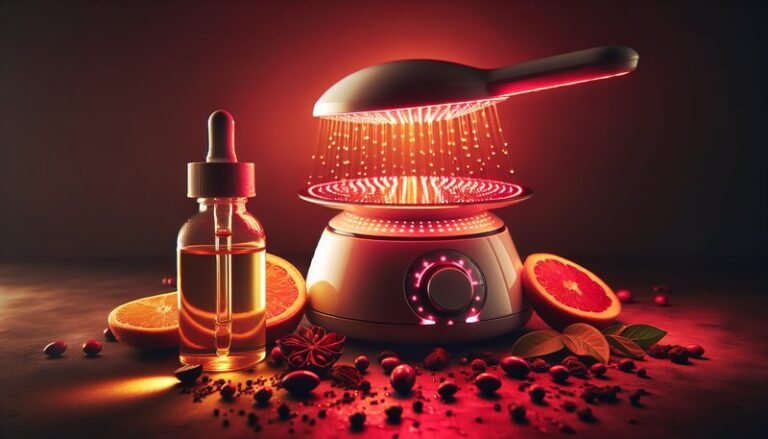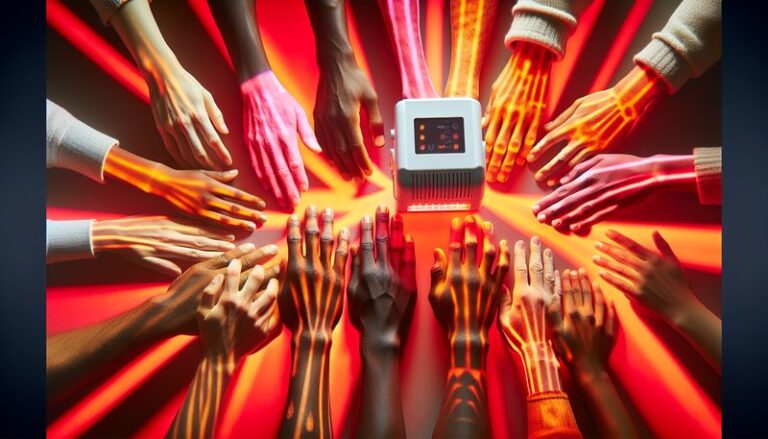How Often To Use Red Light Therapy For Hair Growth?
How Often To Use Red Light Therapy For Hair Growth?
Are you struggling with hair loss and seeking effective treatments? Red light therapy could be the solution you’re looking for.
In this article, we will explore how often to use red light therapy for hair growth, its benefits, practical considerations, and alternatives. Whether you’re new to this treatment or seeking optimized results, this guide will provide you with the information you need to make informed decisions about your hair care regimen.
Key Takeaways
- Regular use of red light therapy can stimulate hair growth and enhance hair density.
- Consistency is key; users typically benefit from sessions ranging from two to five times a week.
- Consult with a healthcare professional to tailor the treatment frequency to your specific needs.
What is Red Light Therapy?
Red light therapy (RLT) is a non-invasive treatment that uses low-level wavelengths of red light to promote various biological processes in the body. In relation to hair growth, RLT works by stimulating cellular activity in the hair follicles, leading to increased circulation and potentially avoiding hair thinning or loss.
This therapy has gained traction in recent years, thanks to an increasing body of research supporting its efficacy. Devices used for red light therapy include handheld devices, panels, and laser caps, providing multiple options for users to incorporate RLT into their routine.
What are the Benefits of Red Light Therapy?
Red light therapy boasts numerous advantages for those struggling with hair loss or surrounding hair health. Let’s delve deeper into some of these benefits.
Stimulates Hair Growth
In clinical studies, red light therapy has shown promising results in promoting hair growth. The light penetrates the scalp and encourages the growth phase of hair follicles, which may lead to improved hair density over time.
Enhances Scalp Health
RLT improves blood circulation to the scalp, delivering essential nutrients and oxygen to hair follicles. This enhancement helps create a healthier environment for hair growth and can alleviate issues such as dandruff or dryness.
Non-Invasive and Painless
Unlike some other hair loss treatments, red light therapy is painless and non-invasive. Users typically experience no side effects, making it a safe option for most individuals seeking to improve hair health.
Can Be Used at Home
Many red light therapy devices are designed for home use, providing convenience and privacy. This flexibility allows users to integrate RLT into their daily routines without the need for frequent clinic visits.
Is it Possible to Overuse Red Light Therapy?
While red light therapy is generally safe, understanding the limits of its usage is essential. Overuse can lead to diminishing returns and may not yield better results.
What are the Advantages of Following Recommended Usage?
Using red light therapy according to guidelines maximizes benefits.
- Effectiveness: Consistent and appropriate use enhances the likelihood of noticeable hair growth.
- Avoids Skin Irritation: Following recommended treatment times minimizes the risk of irritation or adverse reactions.
- Time Management: Sticking to established protocols helps maintain a productive routine, allowing you to fit therapy seamlessly into your schedule.
What are the Disadvantages of Overusing Red Light Therapy?
Exceeding recommended usage can lead to complications.
- Decreased Efficacy: More frequent use may not produce significantly better results and can lead to wasted effort and time.
- Skin Sensitivity: Overexposure to light may irritate the scalp, especially for those with sensitive skin.
- Potential for Psychological Dependence: Over-reliance on treatments may hinder individuals from seeking other lifestyle or dietary changes that support hair growth.
What are the Things to Consider Before Starting Red Light Therapy?
Before commencing red light therapy, it’s crucial to consider several factors to ensure a successful experience.
Consultation with a Professional
Prior to starting RLT, consult with a healthcare provider or dermatologist to tailor your approach based on your hair growth needs and overall health.
Device Quality
Not all red light therapy devices are created equal. Research reputable brands and consider options that are clinically tested and proven effective in promoting hair growth.
Learn all about it in Can Red Light Tighten Skin?
Patience and Realistic Expectations
Results may take time, often several weeks to months. Maintain realistic expectations and remain consistent with treatments for optimal outcomes.
Skin Type and Sensitivity
Individuals with certain skin conditions may need to exercise caution. Understanding your skin type will guide you in determining the best RLT approach.
What are the Alternatives to Red Light Therapy?
If you’re considering alternatives for promoting hair growth, several options may also offer benefits.
Minoxidil
Minoxidil, commonly known as Rogaine, is an FDA-approved topical treatment applied directly to the scalp. It promotes hair regrowth and is widely used for various types of hair loss.
Platelet-Rich Plasma (PRP) Therapy
PRP involves drawing a small amount of blood, processing it to concentrate platelets, and injecting it into the scalp. This procedure stimulates hair follicles and promotes hair growth.
Low-Level Laser Therapy (LLLT)
Similar to red light therapy, LLLT uses specific wavelengths of light to promote hair growth. However, it often comes in different forms and devices, such as laser combs and caps.
Check out our analysis Is Red Light Therapy Effective?
Hair Transplant Surgery
For severe hair loss, hair transplant surgery may be a viable option. This invasive procedure relocates hair follicles from denser areas to balding spots.
Conclusion: Is it Recommended to Use Red Light Therapy for Hair Growth?
In summary, red light therapy can be an effective and safe option for those seeking to boost hair growth and improve scalp health. Users should adhere to recommended frequency guidelines, typically ranging from two to five sessions per week, while considering individual health and hair growth needs.
Ultimately, consulting a healthcare professional can provide tailored recommendations and help integrate RLT into a comprehensive hair care plan.
Frequently Asked Questions
How soon can I expect to see results from red light therapy for hair growth?
Results can vary, but many users notice improvements within three to six months of consistent treatment.
Can I use red light therapy in conjunction with other hair loss treatments?
Yes, combining therapies such as minoxidil with red light therapy can enhance overall effectiveness, but always consult your healthcare provider first.
Is red light therapy safe for all hair types?
Red light therapy is generally safe for all hair types and colors. However, individuals with specific scalp conditions should seek professional advice before starting treatment.
How do I choose the right device for red light therapy?
Look for devices that specify effective wavelengths (typically around 600-650 nm) and are backed by clinical research or user testimonials.




